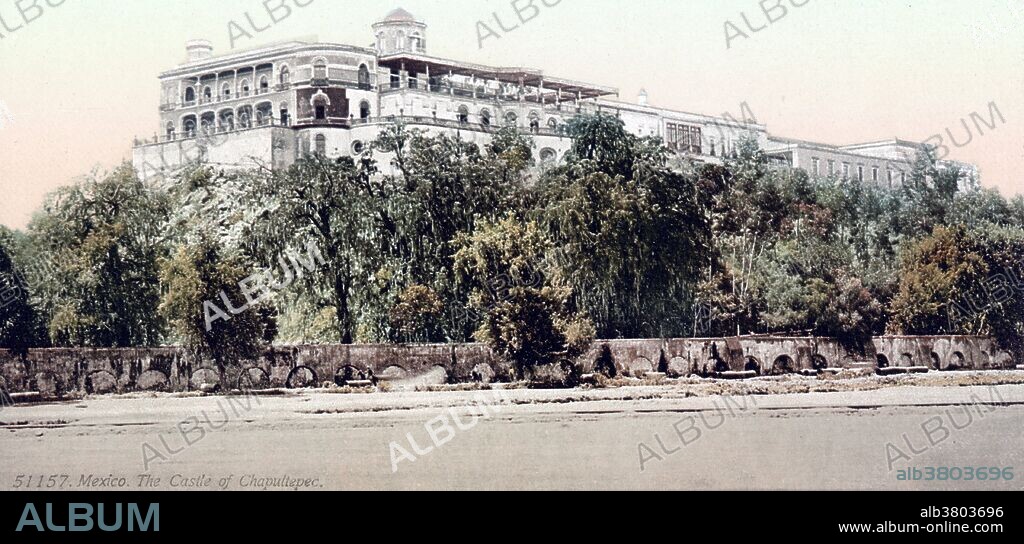alb3803696
Chapultepec Castle, Mexico City, 1884-1900

|
Añadir a otro lightbox |
|
Añadir a otro lightbox |



¿Ya tienes cuenta? Iniciar sesión
¿No tienes cuenta? Regístrate
Compra esta imagen

Título:
Chapultepec Castle, Mexico City, 1884-1900
Descripción:
Ver traducción automática
Chapultepec Castle (Castillo de Chapultepec) is located on top of Chapultepec Hill. The site of the hill was a sacred place for Aztecs, and the buildings atop it have served several purposes during its history, including that of Military Academy, Imperial residence, Presidential home, observatory, and presently, the Museo Nacional de Historia. It is the only Royal Castle in North America. The castle started to acquire its current look during the Second Mexican Empire, when Emperor Maximilian I of Mexico and his wife Empress Carlota chose it as their residence and the seat of their Court in 1864. The Emperor hired several European and Mexican architects to design the several projects, which followed a neoclassical style and made the palace more habitable. Botanist Wilhelm Knechtel was in charge of creating the aerial garden located on the roof of the building. Additionally, the Emperor brought from Europe countless pieces of furniture, objets d'art and other fine household items that are exhibited to this day. Detroit Publishing Company circa 1884-1900.
Crédito:
Album / LOC/Science Source
Autorizaciones:
Modelo: No - Propiedad: No
¿Preguntas relacionadas con los derechos?
¿Preguntas relacionadas con los derechos?
Tamaño imagen:
4800 x 2301 px | 31.6 MB
Tamaño impresión:
40.6 x 19.5 cm | 16.0 x 7.7 in (300 dpi)
Palabras clave:
AMÉRICA DEL NORTE • ARQUITECTONICO • ARQUITECTURA • AÑOS 1890 • CASTILLO • DÉCADA DE 1880 • FAMOSO • FORTALEZA • FOTO • FOTOGRAFIA • HISTORIA • HISTORICO • IMPORTANTE • MEXICO • NORTEAMERICA • PALACIO • POSTAL • PUNTO DE REFERENCIA • SIGLO XIX
 Pinterest
Pinterest Twitter
Twitter Facebook
Facebook Copiar enlace
Copiar enlace Email
Email
